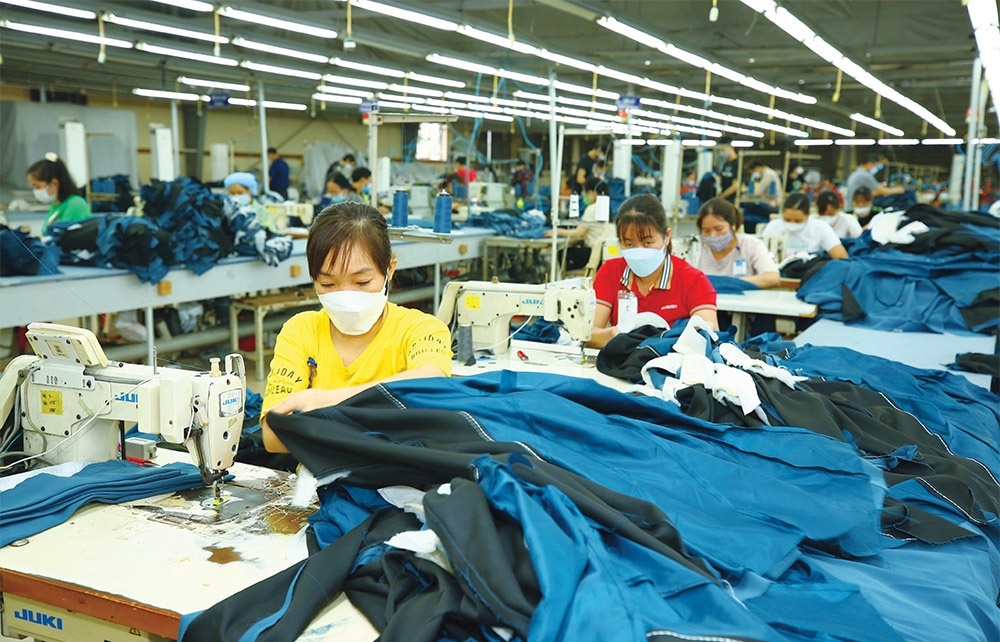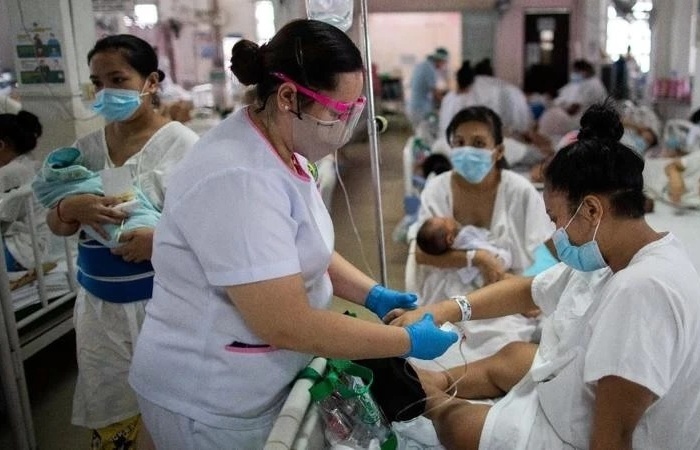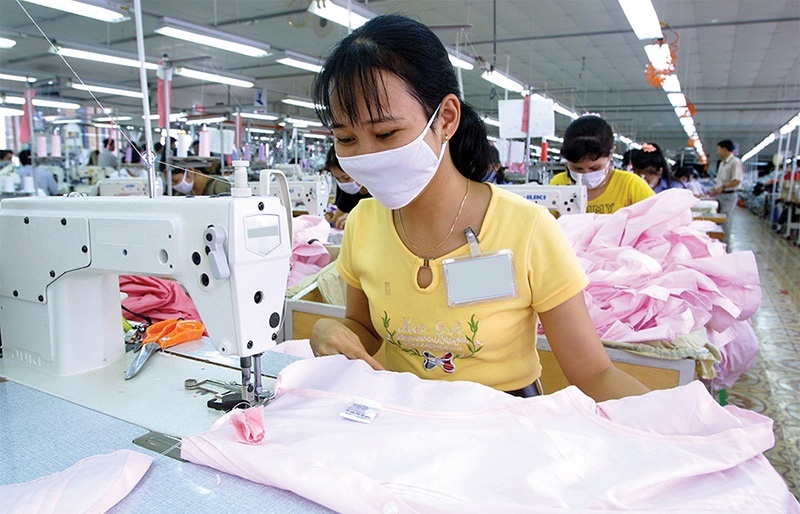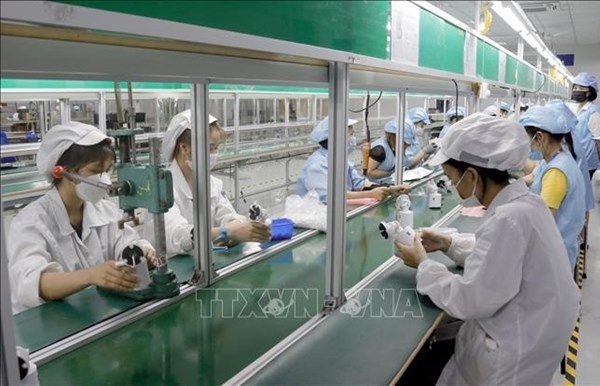Post-holiday season boost for factories as demand rises
 |
| Some foreign-invested enterprises are still looking for thousands of new workers, photo Le Toan |
In Hanoi, 90 per cent of enterprises have started production with 97 per cent of workers returning to work up to the present point, concentrated in industrial and export processing zones, the textile industry, and large-scale manufacturing enterprises, according to local statistics.
The rate in industrial zones in Thanh Hoa and Bac Ninh provinces is 98 per cent and more than 90 per cent, respectively.
In Ho Chi Minh City, the Trade Union of Industrial and Export Processing Zones said that 82 per cent of workers have returned to work.
These are deemed fairly surprising numbers due to the sheer amount of people who left the big cities over the past year thanks to pandemic restrictions, many of whom figured out plans to stay in their home provinces for the long term. However, despite facing more difficulties in business due to last year’s woes, many employers still decided to maintain their salaries and keep festive bonuses unchanged to motivate and retain employees.
Nguyen Huy Tuan, CEO of Song Hong Garment JSC in the northern province of Nam Dinh said, “On the first working day of this year, 100 per cent of the company’s staff worked. That attachment is due to the clear and transparent salary and bonus regime of the company, which meets the requirements of employees.”
The need to recruit new workers in the first quarter is helping to stabilise production across many businesses. Survey results from the Ministry of Labour, Invalids and Social Affairs (MoLISA) in key cities and provinces show that businesses are expected to have recruitment needs of about 700,000 people in 2022.
Vu Quang Thanh, deputy director of the Hanoi Centre of Employment Services, said that the labour market in Hanoi at the beginning of the year was uproarious and many companies still have the need to recruit more workers, giving priority to those with high income and skills for long-term adaptation to pandemic prevention. “About 30 companies have recruited nearly 1,000 positions in the past few days,” said Thanh. “Workers in factories in Hanoi return to production at a very high rate and there is no shortage of labour after Lunar New Year. Therefore, only businesses that expand production have the need to recruit more personnel.”
In Bac Giang province, a number of foreign-invested enterprises are also announcing recruitment of a large number of workers. Luxshare-ICT Vietnam Ltd. needs to recruit 8,000 workers, while Lens Vietnam Co., Ltd. is also in need of recruiting about 3,000 more workers in February-March due to production expansion.
Labour market forecasts in Ho Chi Minh City note that in 2022, the city’s market will continue to gradually increase the proportion of workers in the industrial, construction, and service sectors, gradually reducing the proportion of workers in agro-forestry-fisheries. Ho Chi Minh City is expected to recruit 255,000-310,000 workers this year, of which the demand for human resources in the first quarter is about 72,000-87,000 workers.
The industrial capital of the south, Binh Duong province, also has a huge demand for human resources. Only in the first quarter of 2022, Binh Duong has a need to recruit about 40,000-50,000 workers to fulfil orders, concentrating heavily on key industries such as footwear, textiles, electronics, wood, food, and trade in services.
Vu Trong Binh, director of the Employment Department under the MoLISA, assessed that the impact of the pandemic could still affect workers, especially in the southern key economic regions. “A labour shortage has not occurred at the beginning of the year but may increase in the second quarter when businesses start operating again at the highest capacity. The demand for labour recruitment will increase,” Binh shared.
What the stars mean:
★ Poor ★ ★ Promising ★★★ Good ★★★★ Very good ★★★★★ Exceptional
 Tag:
Tag:
Related Contents
Latest News
More News
- Growth beckons for GenAI startups in Vietnam (November 21, 2024 | 17:47)
- SABECO to elevate Vietnam's beverage industry to global standards (November 21, 2024 | 17:36)
- ABeam Consulting Vietnam introduces BSQCD Purchasing Strategy Framework (November 21, 2024 | 16:40)
- Major railway requires debt considerations (November 21, 2024 | 12:07)
- Reviving a new life cycle for plastic waste (November 21, 2024 | 09:16)
- Key balances maintained for industrial production (November 21, 2024 | 08:00)
- Ecolean Vietnam honoured with prestigious sustainability award (November 19, 2024 | 10:01)
- HEINEKEN Vietnam’s clear path towards net-zero (November 18, 2024 | 15:13)
- VLCA 2024 honours corporate governance excellence as listed companies raise the bar (November 18, 2024 | 09:00)
- High-tech personnel to drive competition (November 17, 2024 | 09:21)
























 Mobile Version
Mobile Version